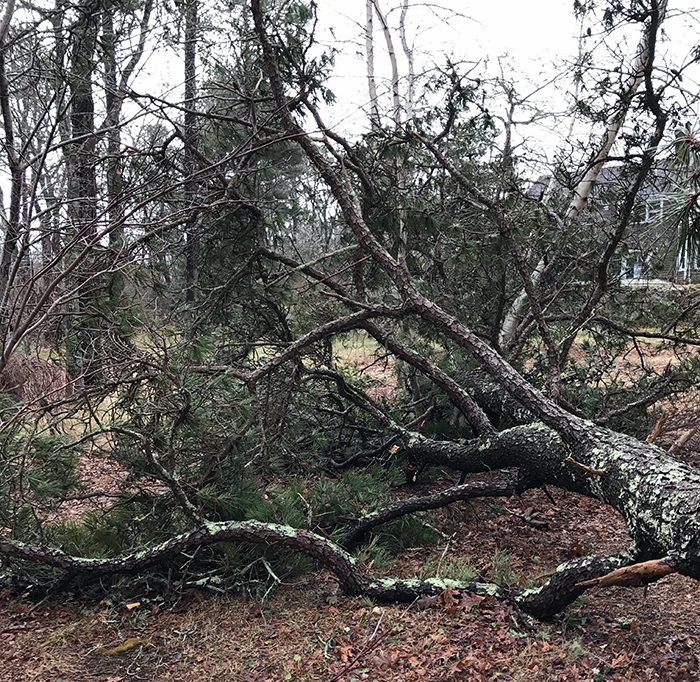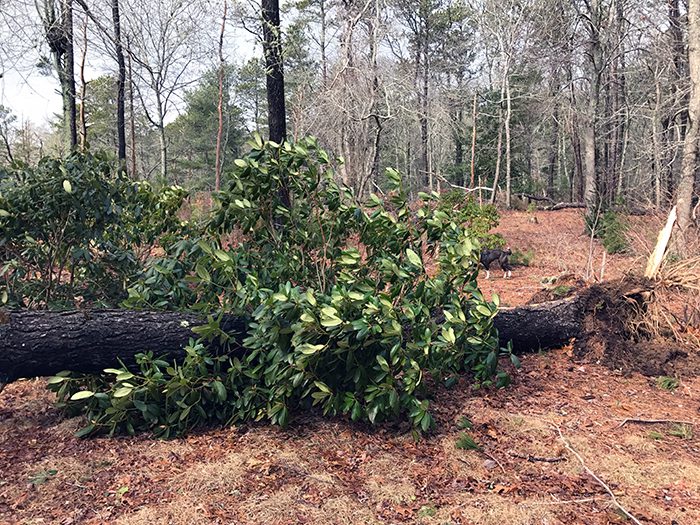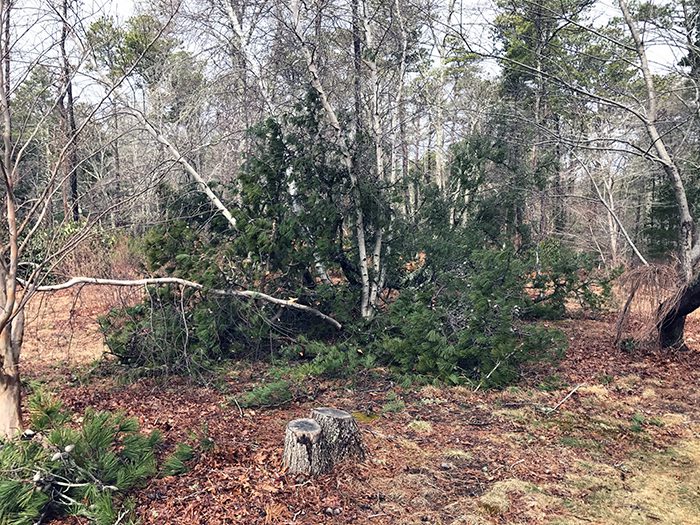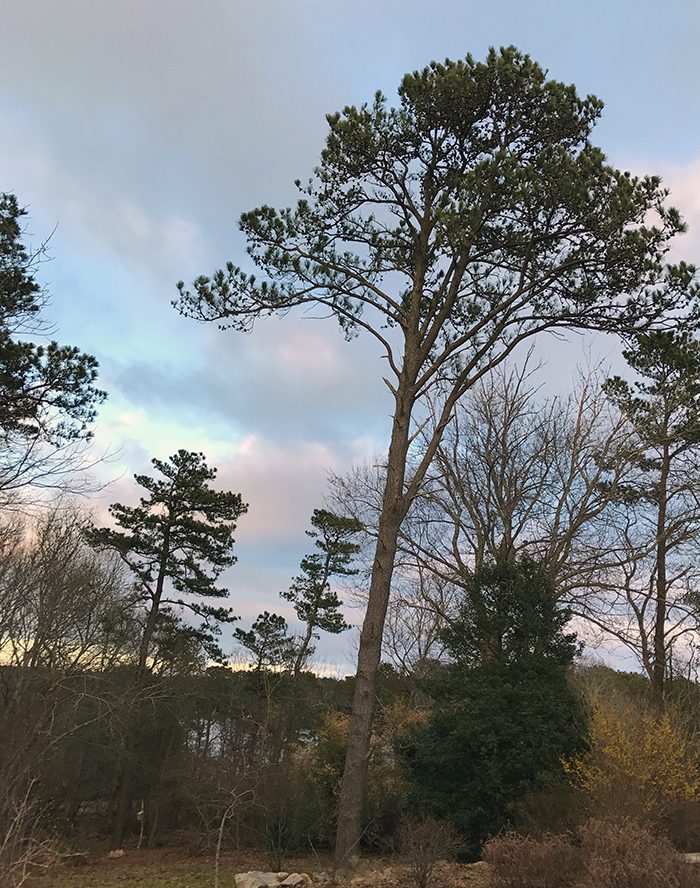Cape Cod’s Native Pitch Pines
Cape Cod’s Native Pitch Pines
One of the most striking images from the recent “Winter Storm Riley” on Cape Cod was the photo of a house in Sandwich that was struck by seven fallen trees. A homeowner’s nightmare, right? All of these trees were one of our native pines, Pinus rigida. Frequently called “scrub pine” or “pitch pine,” these trees often tower over surrounding oaks and maples on the Cape. They have an open canopy and can vary in appearance for several reasons. Some are shaped by windy, stressful environments and others differ because they self-hybridize with other pines in the same genus. Pitch pines can be asymmetrical, thin, wide or evenly branched. As they mature they become top-heavy, so the frequently come down in storms with high winds.
Knowing that these plants are often the first to topple in a storm, many homeowners wonder if they should have the pitch pines that are close to their houses removed. That is a decision that everyone needs to make based on the proximity to the house, existing insurance policies, our level of comfort, and our budgets. Aside from practical considerations, however, we can appreciate these plants for what they have given us through history and the role they play in the Cape environment today.
In Colonial times this tree kept ships in “ship shape.” These pines were the source of turpentine, tar, resin and pitch. Pitch was made by a controlled combustion of Pinus rigida over a period of time, and resin was gathered much as maple sap is today. These trees were also used to fuel forges and furnaces in the early manufacture of iron. And because it grew in poor soils and was able to regenerate quickly, it became an important tree in America’s growth.Today Pinus rigida is important as a source of shelter and food for many birds and wild mammals. These are not necessarily “trash trees” nor are they without value in the Cape’s ecology.
I have several large pitch pines in my yard, and we tend to have one a year fall in a storm. We also have trees from my neighbor’s lot fall into our yard. In the past storm, one of the largest pines fell. But as my husband and I evaluate these trees on our property, and decide to remove those that put our home in peril, it’s a not necessarily an easy decision. Sometimes we can love a plant but recognize that there are reasons we have to say goodbye.

This pitch pine came down in my yard during the last storm. It was a large, old one and we didn’t expect this tree to fall.

Some pitch pines snap off in the middle. We’ve had this happen with two of our trees so far. This one fell from the ground level, however. It smashed through a Rhododendron. Fortunately, the rhody will recover over time. Once we removed the trunk of the tree and all the broken Rhododendron branches, we saw good, strong stems on both sides of where the trunk fell. This shrub will put up new growth from the ground next spring, and we’ll give it some Holly-tone and a deep soaking once a week to help it along.

The downed pitch pine also smashed through a clump of birch. Two of the birch stems were broken beyond repair. Two more may or may not recover…we’ll leave them and see what happens. It’s important to remember that sometimes plants survive against all odds!

The large pitch pine in this photo is the one that breaks my heart. It is, for it’s species, a fairly symmetrical tree. The birds love this plant. I’ve seen woodpeckers hunkered down on the sheltered side during hurricanes, and every morning crows perch on the stumps of dead branches to survey the bird feeder below. I love this tree, but it is close enough to the house that we think it prudent to have it removed. The other pines in this photo are far from the house and we can let them stay.
Sometimes we have to be practical in our yards and gardens, and other times we can let heart and sentiment rule the day. Do you have pitch pines on your property? Are you thinking about removing them too?
Subscribe To Our Newsletter
Sign up for our weekly email about sales and events.
